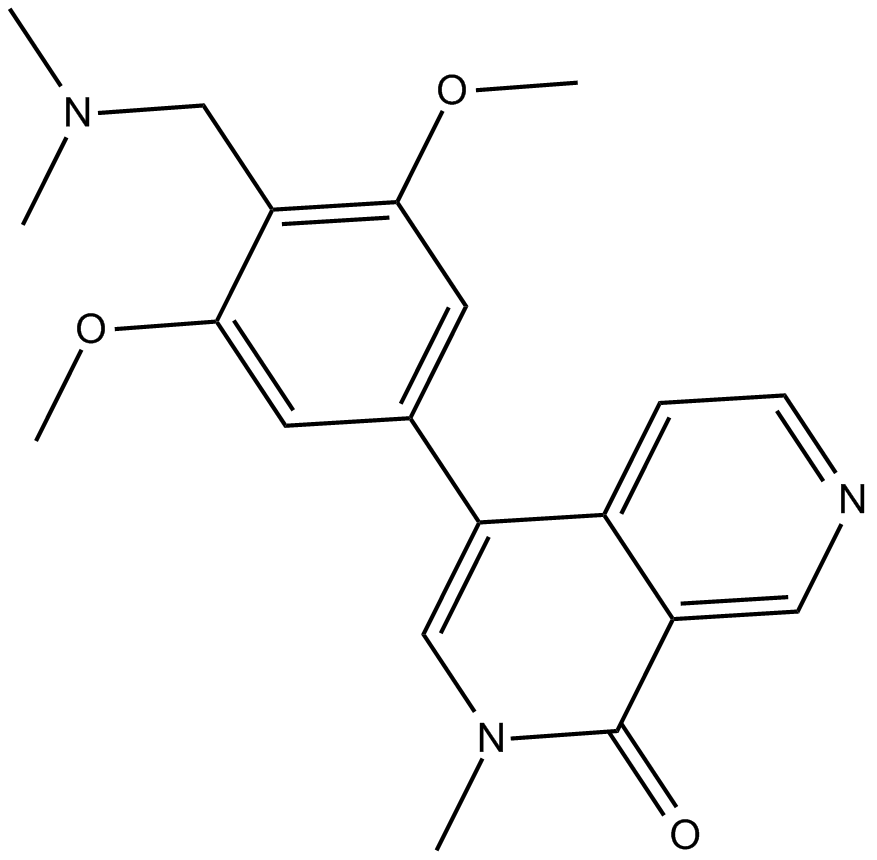BI-7273 |
| Catalog No.GC16726 |
BRD9 bromodomain inhibitor
Products are for research use only. Not for human use. We do not sell to patients.

Cas No.: 1883429-21-7
Sample solution is provided at 25 µL, 10mM.
IC50: 19 and 117 nM for BRD9 and BRD7, respectively.
BI-7273 is a BRD9 bromodomain inhibitor.
BRD9, a SWI/SNF subunit, is identified to have a key role in leukemia growth, and the BRD9 bromodomain (BD) has been shown to be critical for the proliferation of acute myeloid leukemia cells.
In vitro: BI-7273 was previously demonstrated to mimic genetic perturbation of BRD9. BI-7273 could also target BRD7 BD, a BD protein that was found in a subclass of SWI/SNF remodelling complexes sharing high sequence homology with BRD9. In addition, BI-7273 was able to form an additional positive interaction with the carbonyl of Asn100 in BRD9. Furthermore, BI-7273 showed no measurable activity against BET family BDs even up to a concentration of 100 μM in the biochemical Alpha assay [1].
In vivo: In order to explore the potential of BI-7273 as in-vivo chemical probe, female BomTac:NMRIFoxn1nu mice was orally administered two doses at 20 and 180 mg/ kg and the concentration of BI-7273 in plasma over time was measured. Results showed that dose-dependent but nonlinear AUC was observed for BI-7273, achieving exposure that was higher compared to the EC50 level determined for BI-7273 in proliferation assays with EOL-1 cells [1].
Clinical trial: Up to now, BI-7273 is still in the preclinical development stage.
Reference:
[1] Martin LJ et al. Structure-Based Design of an in Vivo Active Selective BRD9 Inhibitor. J Med Chem.2016 May 26;59(10):4462-75.
Average Rating: 5 (Based on Reviews and 16 reference(s) in Google Scholar.)
GLPBIO products are for RESEARCH USE ONLY. Please make sure your review or question is research based.
Required fields are marked with *




















